First Saudi flight in nearly a decade lands in Tehran
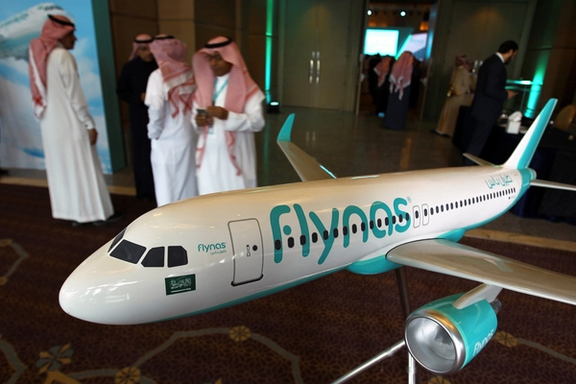
For the first time in nearly 10 years, a direct flight operated by a Saudi Arabian airline landed in Iran on Saturday night, marking a significant step in renewed ties between the two countries.

For the first time in nearly 10 years, a direct flight operated by a Saudi Arabian airline landed in Iran on Saturday night, marking a significant step in renewed ties between the two countries.
The flight, operated by Flynas, arrived at Imam Khomeini International Airport on May 18 as part of the 2025 Hajj operations.
This service is part of an agreement between Iran and Saudi Arabia to facilitate the transportation of Iranian pilgrims to this year’s Hajj pilgrimage.
Under the terms of the agreement, Flynas is responsible for flights from Mashhad and part of the routes from Tehran, while Iran Air will handle the remaining routes.
Flynas is expected to operate 224 round-trip flights by July 1, transporting approximately 37,000 Iranian pilgrims, according to Iranian media.
In January 2024, flights to Saudi Arabia for Iranian pilgrims traveling for Umrah were canceled due to "technical disagreements" between the two countries. However, in April, Saudi Arabia reinstated the pilgrimage flights, allowing 90,000 Iranians to participate in the 2024 Hajj.
Tehran and Riyadh reached an agreement in February 2023 to resume diplomatic relations after a seven-year diplomatic hiatus. The agreement, mediated by China during the visit of then Supreme National Security Council Secretary Ali Shamkhani to Beijing, paved the way for a subsequent trip by Ebrahim Raisi, then President of the Islamic Republic, to Saudi Arabia.
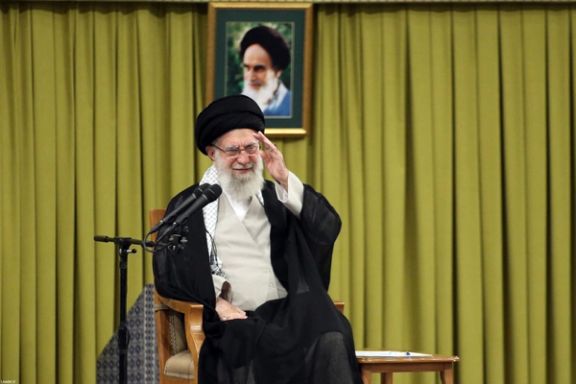
Iran’s Supreme Leader Ali Khamenei on Saturday accused the United States of trying to impose a failed regional order based on Arab dependence on American military support, warning that it would not last.
“This failed model, where Arab states are told they can’t survive ten days without US support, is being imposed again,” Khamenei said. “But it will collapse, and America will leave this region.”
Khamenei said Washington was promoting a security structure that keeps regional countries reliant on foreign protection. “The US wants these countries unable to function without it — that’s the message in their behavior and their proposals,” he said.
He also accused the United States of fueling instability and violence. “The US has used its power to massacre in Gaza, to stoke war wherever possible, and to arm its mercenaries,” he said, describing Israel as “a malignant cancer that must and will be uprooted.”
Khamenei says Trump’s rhetoric ‘shames America’
Khamenei also condemned US President Donald Trump’s remarks during his recent visit to the region.
“Some of what the US president said during this trip doesn’t even merit a reply,” he said in a meeting with teachers in Tehran. “The level of discourse is so low it brings shame to the speaker and to the American nation.”
Trump, during a regional tour that included Saudi Arabia, the United Arab Emirates and Qatar, called for a tougher nuclear agreement with Iran and accused its leadership of spreading instability.
Speaking Tuesday in Riyadh, he said, “The biggest and most destructive of these forces is the regime in Iran, which has caused unthinkable suffering in Syria, Lebanon, Gaza, Iraq, Yemen and beyond.”
Trump also mocked Iran’s economic and environmental problems, contrasting its decline with the development of its Persian Gulf neighbors.
“While you have been constructing the world's tallest skyscrapers in Jeddah and Dubai, Tehran's 1979 landmarks are collapsing into rubble,” he said. “[Iran’s] corrupt water mafia… causes droughts and empty riverbeds. They get rich.”
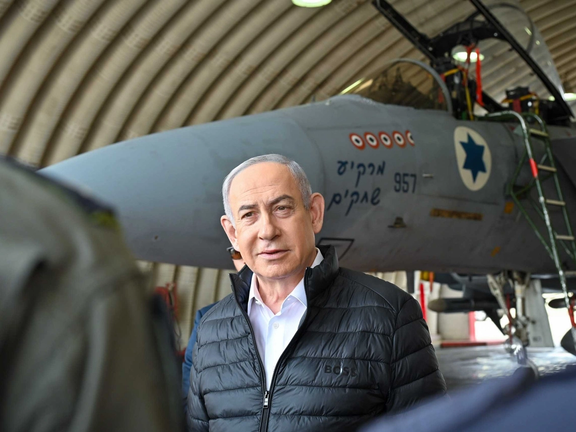
Prime Minister Benjamin Netanyahu on Friday accused Iran of orchestrating Houthi attacks against Israel and warned that Israel would escalate its military response, including further strikes on the group’s leadership and infrastructure.
“Iran stands behind them, providing support, guidance and approval,” Netanyahu said.
“The Houthis will pay a very heavy price, and we will defend ourselves through all necessary means to protect Israel's security.”
Earlier on Friday, Israeli airstrikes targeted the Houthi-controlled ports of Hodeidah and Salif in Yemen. The Israeli military reported that 15 fighter jets dropped over 30 munitions on these ports, which it said were to be used for transferring weapons.
Netanyahu confirmed the strikes saying, “Our pilots have now successfully struck two Houthi terrorist ports again, and this is just the continuation, with more to come.”
“We are not willing to sit aside and let the Houthis harm us. We will strike them much harder, including their leadership and all infrastructure that enables them to attack us.”
The Houthis have continued firing missiles at Israel in support of Palestinians in Gaza, though they have stopped targeting US ships.
In response, Israel has launched retaliatory strikes, including a May 6 attack on Sanaa airport in Yemen that killed several people.
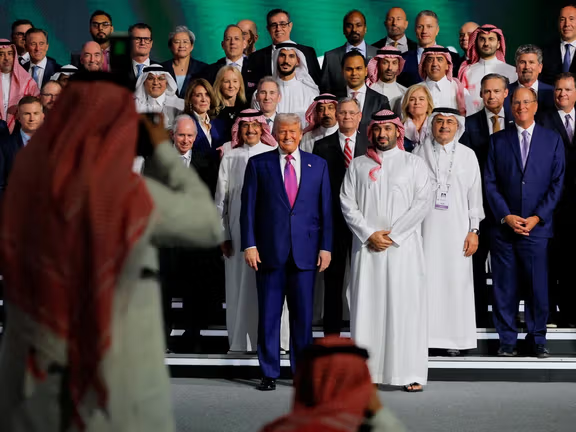
On his tour of Iran’s Arab neighbors, US president Donald Trump lashed out at Tehran while hinting a deal was close—warning and wooing at once, and raising as many questions as he answered about the prospects of his transactional diplomacy.
President Trump arrived in Saudi Arabia on May 13 on the first leg of a four-day, three-country trip to the Middle East that included stops in Qatar and the United Arab Emirates.
The choice of Saudi Arabia for the first state visit of Trump’s second term mirrored that of his first, except this time he did not go to Israel, signaling that the administration is doubling down on its Arabian peninsula partners as key supporters of US regional interests.
Iran was naturally not on the itinerary but ever-present in Trump’s public statements, with the president using a characteristic blend of carrot-and-stick which urged Iranian leaders to take a “new and better path” and warned of “massive maximum pressure” if Tehran “rejects this olive branch.”
Trump expressed his desire to reach a deal with Iran on many occasions, even hinting that a deal was almost agreed. For that to happen, however, Tehran "must stop sponsoring terror, halt its bloody proxy wars, and permanently and verifiably cease its pursuit of nuclear weapons,” he added.
Later, aboard Air Force One, Trump told reporters that Iran had to “make the right decision” about its nuclear program because “something’s going to happen one way or the other” and "we’ll either do it friendly or we’ll do it very unfriendly.”
Arab, Iranian audiences
There are various takeaways for leaders in Iran as well as in its neighboring Arab countries, from Trump’s commentary.
For the latter, Trump’s demand that Iran end its sponsorship of terror and involvement in proxy wars will be welcomed as a signal that any agreement with Tehran might not be narrowly confined to its nuclear program alone, as was the case with the Joint Comprehensive Plan of Action in 2015.
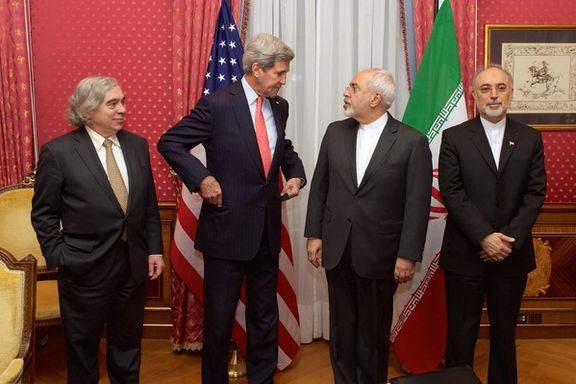
For leaders in Riyadh, Doha and Abu Dhabi - not to mention in Tel Aviv -it was Iran’s regional activities that were as much a priority as its nuclear program, and their exclusion from the negotiations for the 2015 nuclear deal caused alarm in the region.
However, any such optimism in regional corridors of power may be tempered by concern that the president’s unconventional approach to deal-making may create openings for an agreement that gives Trump the optics he desires at the expense of nuts-and-bolts details on specific Iranian commitments.
Deals, details and differences
Comments by Steve Witkoff, Trump’s chief negotiator and one of his closest confidants, in podcast and other appearances, have not given the impression of a details-focused approach to diplomacy, whether in terms of Russia and Ukraine or Iran.
Witkoff and other members of the Trump administration have also sent mixed messages about whether Iran would be able to enrich uranium in any agreement, reinforcing concerns by domestic and regional critics of US engagement with Iran that a new deal may be worse than no deal.
For the leadership in Tehran, beset by economic challenges, energy shortages and geopolitical setbacks that left its regional "Axis of Resistance" weakened, the optics of Trump’s regional procession offer glimpses of opportunity.

The fact that Trump met with Syria’s new president, Ahmed al-Sharaa, in Riyadh and declared that sanctions on Syria would be lifted was further illustration that Trump is transactional rather than ideological, and willing to take decisions that break the mold of conventional American policy thinking.
This was underscored in Trump’s remarks in Riyadh on May 13 when he slammed the failures of generations of western interventionists and neocons in the Middle East who “told you how to do it, but they had no idea how to do it themselves” and, he argued, did far more damage than good.
In making these comments and receiving al-Sharaa, Trump has shown himself willing to break free of traditional constraints on US policymaking in the region, at least on the surface, and this may yet extend to Iran.
Unclear outlook
There are nevertheless multiple uncertainties for Iranian officials as they begin to digest the outcomes of Trump’s visit to the Middle East and assess the implications, both short- and long-term, for Tehran.
The plethora of major deals signed in Saudi Arabia, Qatar, and the UAE have cemented these countries’ deep and longstanding ties with the US across the defense and security, economic, and energy spectrum.
Any concerns in the region of US disengagement from the Middle East may be dissipated by the sight of Trump bestowing such significance on the region, in stark contrast to the disdain with which the administration has treated its formal allies in Europe and North America.
And yet, if Trump is to reap the benefits of the hundreds of billions of dollars of planned investments into the US, he will likely return from his trip with a conviction that the pledges, and the returns, require stability and would be jeopardized by any conflict with Iran.
This not only plays into the de-risking and de-escalatory approach that Iran's energy-rich Arab neighbors have taken since 2020 but may also fortify Trump’s desire to burnish his credentials as a peacemaker in the explosive region.
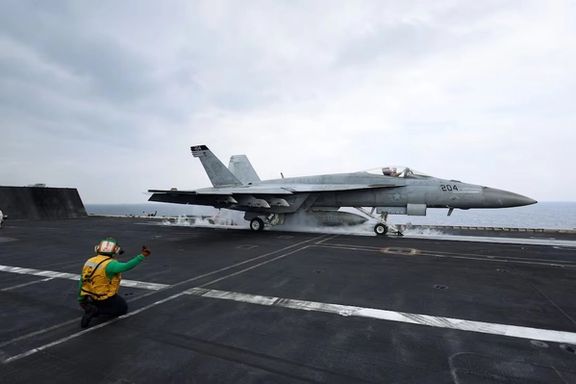
US President Donald Trump made a u-turn on his campaign against the Iran-backed Houthi militia after huge financial losses and American casualties became impossible to justify, according to the New York Times.
After 30 days of a ramped-up campaign against the Islamist militia amid its blockade of commercial shipping in the Red Sea region, US strikes had used around $1 billion of weapons and munitions.
In addition, two $67 million F/A-18 Super Hornets from America’s flagship aircraft carrier tasked with conducting strikes against the Houthis accidentally tumbled off the carrier into the sea.
On day 31 of the operation to quash the blockade in the key maritime trade route, Trump is reported to have requested a report, in which the numbers began to reflect an ever costly operation against the group only becoming more adamant in its own mission.
The Houthis shot down several American MQ-9 Reaper drones and continued to fire at naval ships in the Red Sea, including an American aircraft carrier, with the US failing to gain even air superiority over the group the US has listed as a terrorist organization.
“In those first 30 days, the Houthis shot down seven American MQ-9 drones (around $30 million each), hampering Central Command’s ability to track and strike the militant group,” the NYT reported.
“Several American F-16s and an F-35 fighter jet were nearly struck by Houthi air defenses, making real the possibility of American casualties,” the NYT said, according to multiple US officials.
When two pilots and a flight deck crew member were injured in the two episodes involving the F/A-18 Super Hornets, which fell into the Red Sea from the aircraft carrier Harry S. Truman within 10 days of each other, that fear became a reality.
The Pentagon reported that American strikes had hit multiple command and control facilities, air defense systems, advanced weapons manufacturing facilities and advanced weapons storage locations.
More than a dozen senior Houthi leaders had been killed, according to the US military, but the cost was mounting with the deployment of two aircraft carriers, additional B-2 bombers and fighter jets, as well as Patriot and THAAD air defenses, to the Middle East, officials told the NYT.
A White House spokeswoman, Anna Kelly, said in a statement to The New York Times that the US military had carried out more than 1,100 strikes, killing hundreds of Houthi fighters and destroying their weapons and equipment.
The chief Pentagon spokesman, Sean Parnell, said the operation was always meant to be limited. “Every aspect of the campaign was coordinated at the highest levels of civilian and military leadership,” he said in an emailed statement to the NYT.
Under former President Joe Biden, the US was leading a more than 20-nation coalition against the Houthi blockade, which had seen targeted strikes on the group’s infrastructure, but in a bid to free up global shipping, Trump cracked down on the Iran-backed group, before the costs began to raise eyebrows.
But now, while the Houthis have paused attacks on commercial shipping since the Oman-mediated ceasefire with the US, the group has continued targeting Israel, with one ballistic missile missing the country’s main airport by just meters earlier this month.
Ben-Gurion Airport in central Israel remains a target from the group, which has issued multiple statements warning it is no longer safe.
The Houthis say the attacks are in solidarity with the Palestinians in Gaza and they will not stop until a full ceasefire in Gaza.
Since the US agreed to the ceasefire, Israel has begun to step up its own operations against the Houthis independently of the US agreement.

The US military is replacing its B-2 bombers with B-52s at a base in the Indo-Pacific that was seen as being in an ideal location to operate in the Middle East, Reuters reported on Monday citing US officials.
The Pentagon deployed as many as six B-2 bombers in March to a US-British military base on the Indian Ocean island of Diego Garcia, amid a US bombing campaign in Yemen and mounting tensions with Iran.
Experts say that this had put the B-2s, which have stealth technology and are equipped to carry the heaviest US bombs and nuclear weapons, in a position to operate in the Middle East.
US President Donald Trump announced last week that a deal had been reached to stop bombing Yemen's Houthi group.
The B-2 bombers had been used to carry out strikes against the Iran-backed group.